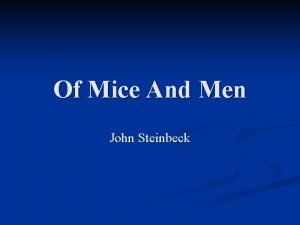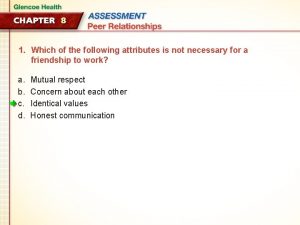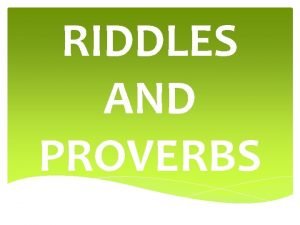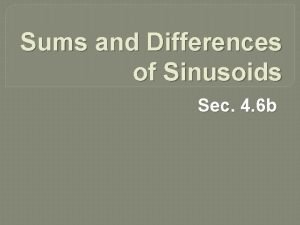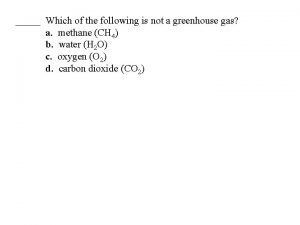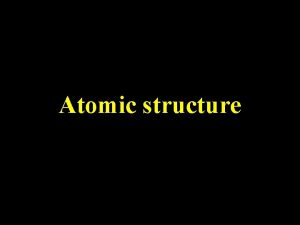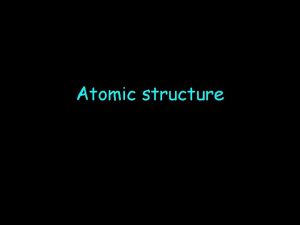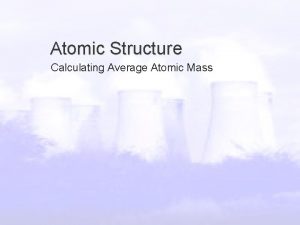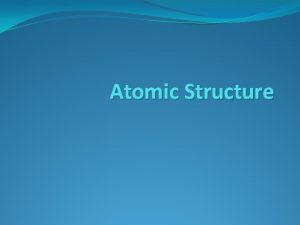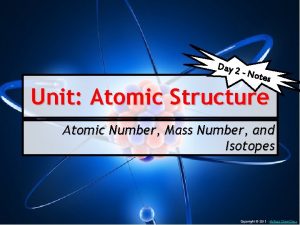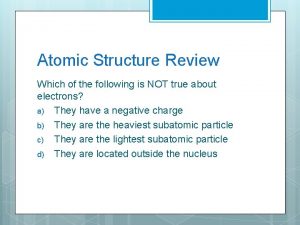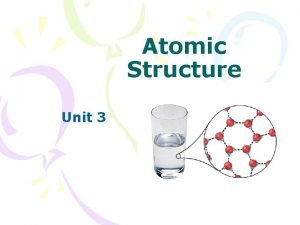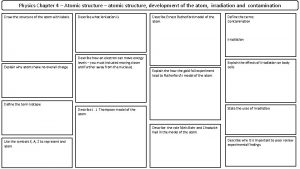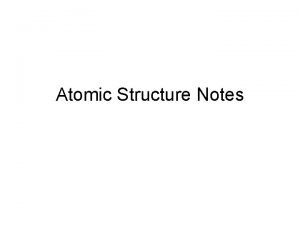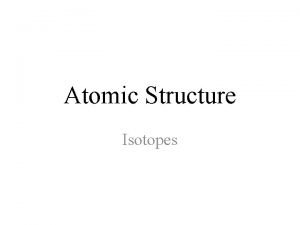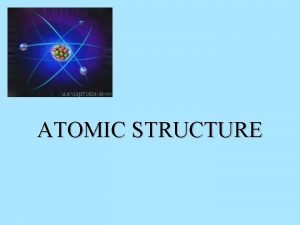Atomic Structure Which of the following are not


















- Slides: 18

Atomic Structure

Which of the following are not subatomic particles? Neutrons 2. Positrons 3. Protons 4. Electrons 1.

Which of the following is not located in the nucleus? Proton 2. Neutron 3. Electron 1.

Which of the following has no electric charge? Proton 2. Neutron 3. Electron 1.

Which of the following has a mass of 0 amu? Proton 2. Neutron 3. Electron 1.

When the number of neutrons are changed, a new ____ exists. Atom 2. Element 3. Isotope 4. Ion 1.

When the number of electrons are changed, a new ____ exists. Atom 2. Element 3. Isotope 4. Ion 1.

A subatomic particle that has about the same mass as a proton, but with no electrical charge, is called a(n) nuclide. 2. neutron. 3. electron. 4. isotope. 1.

When the number of protons are changed, a new ____ exists. Atom 2. Element 3. Isotope 4. Ion 1.

The number of which of the following is the fingerprint of an atom? Protons 2. Neutrons 3. Electrons 1.

Most of the volume of an atom is occupied by nucleus. 2. empty space 3. electrons. 4. protons. 1.

Atomic number is the number of …? Protons 2. Neutrons 3. Electrons 1.

If the atom is charged as an ion, the amount of which particle changes? Proton 2. Neutron 3. Electron 1.

Isotopes are atoms of the same element that have different principal chemical properties. 2. masses. 3. numbers of protons. 4. numbers of electrons. 1.

Mass number – atomic number gives the number of: Protons 2. Neutrons 3. Electrons 1.

An element has 7 electrons, 8 neutrons, and a mass number of 14. You can be certain that the element has how many protons? 1. 2. 3. 4. 5. 6 7 8 14 20

The element Carbon-13 gains a proton. The new element is: Carbon – 14 2. Nitrogen – 13 3. Nitrogen – 14 4. None of the above 1.

In an isotope, the number of which of the following changes? Proton 2. Neutron 3. Electron 1.
 Insidan region jh
Insidan region jh Relative formula mass of hcl
Relative formula mass of hcl Atomic radius periodic table trend
Atomic radius periodic table trend Atomic radii periodic table
Atomic radii periodic table Abundance calculation chemistry
Abundance calculation chemistry Whats the difference between atomic mass and atomic number
Whats the difference between atomic mass and atomic number Atomic number vs atomic radius
Atomic number vs atomic radius Not genuine, not true, not valid
Not genuine, not true, not valid Why is candy unable to imagine getting rid of his old dog?
Why is candy unable to imagine getting rid of his old dog? Which of the following attributes
Which of the following attributes Riddle and proverb
Riddle and proverb Life of pi orange juice
Life of pi orange juice Axial steps
Axial steps Fact finding methods in system development
Fact finding methods in system development Which of the following functions is not a sinusoid?
Which of the following functions is not a sinusoid? What will be the value of svar after the execution
What will be the value of svar after the execution The monophasic liquids are prepared with
The monophasic liquids are prepared with Market form of fish
Market form of fish Which of the following is not a greenhouse gas?
Which of the following is not a greenhouse gas?








